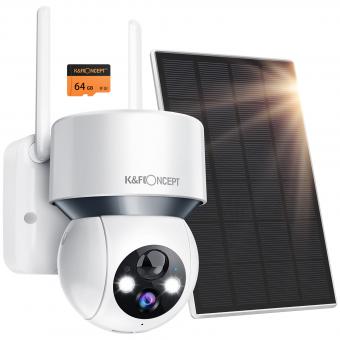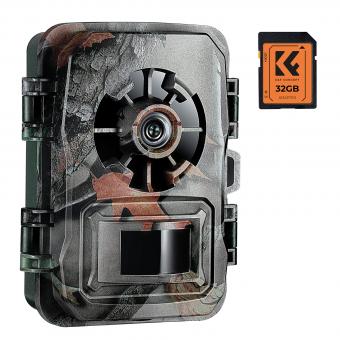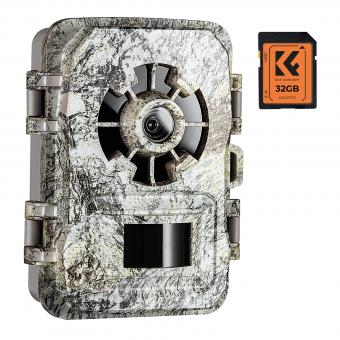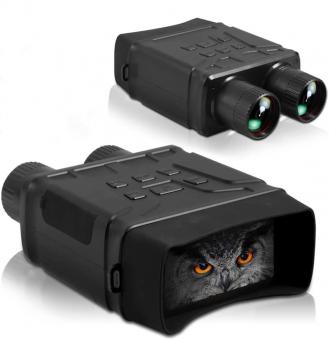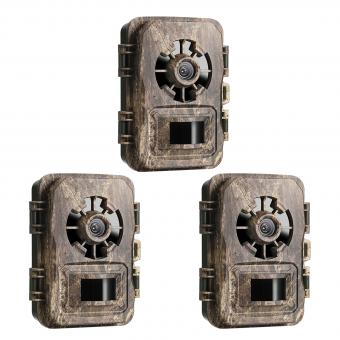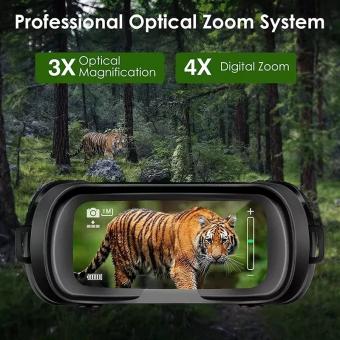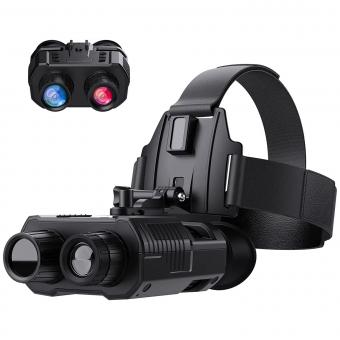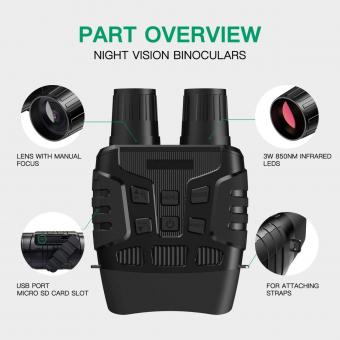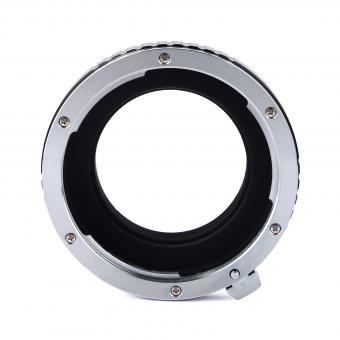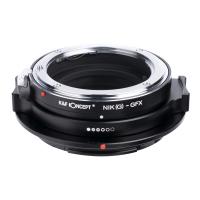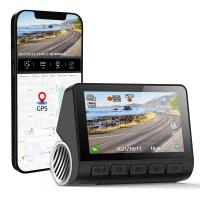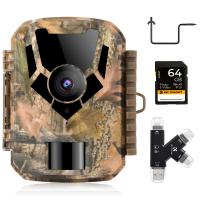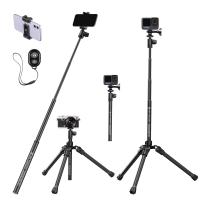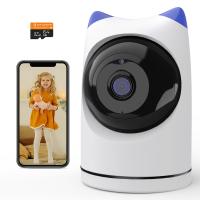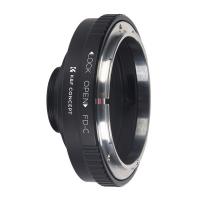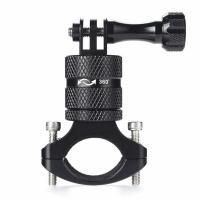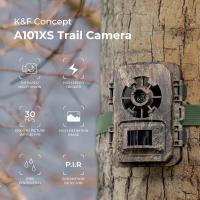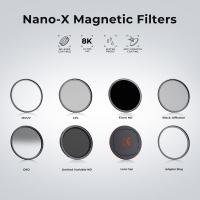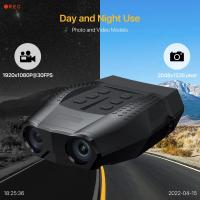What Are Night Vision Binoculars ?
Night vision binoculars are optical devices that allow users to see in low-light or dark conditions. They are equipped with special technology that amplifies the available light, including infrared light, to provide a clearer and brighter image. Night vision binoculars typically consist of two eyepieces and objective lenses, which gather and focus light onto an image intensifier tube. This tube then converts the incoming light into electrical signals, which are amplified and displayed on a screen or eyepiece, allowing the user to see in the dark. Night vision binoculars are commonly used by military personnel, law enforcement agencies, hunters, and outdoor enthusiasts for various purposes, such as surveillance, navigation, and wildlife observation.
1、 Technology and Working Principle of Night Vision Binoculars
Night vision binoculars are optical devices that allow users to see clearly in low-light or dark conditions. They are specifically designed to enhance visibility during nighttime activities such as hunting, surveillance, wildlife observation, and navigation.
The technology behind night vision binoculars is based on the principle of capturing and amplifying available light, including infrared light, to create a visible image. These devices consist of several key components, including an objective lens, an image intensifier tube, and an eyepiece.
The objective lens collects the available light and focuses it onto the image intensifier tube. The image intensifier tube then converts the incoming light into electrons through a process called photoemission. These electrons are then accelerated and amplified, creating a brighter image. Finally, the eyepiece magnifies the image and allows the user to view it.
In recent years, there have been advancements in night vision technology, leading to the development of more advanced and efficient night vision binoculars. One such advancement is the use of digital night vision technology, which replaces the traditional image intensifier tube with a digital sensor. This allows for higher resolution images and the ability to record and capture photos and videos.
Additionally, some night vision binoculars now incorporate thermal imaging technology, which detects the heat emitted by objects and creates an image based on the temperature differences. This technology is particularly useful for detecting living beings in complete darkness or through obstacles such as foliage.
Overall, night vision binoculars have become an essential tool for various applications, providing users with enhanced visibility and the ability to navigate and observe in low-light conditions. With ongoing advancements in technology, we can expect further improvements in image quality, range, and functionality in the future.
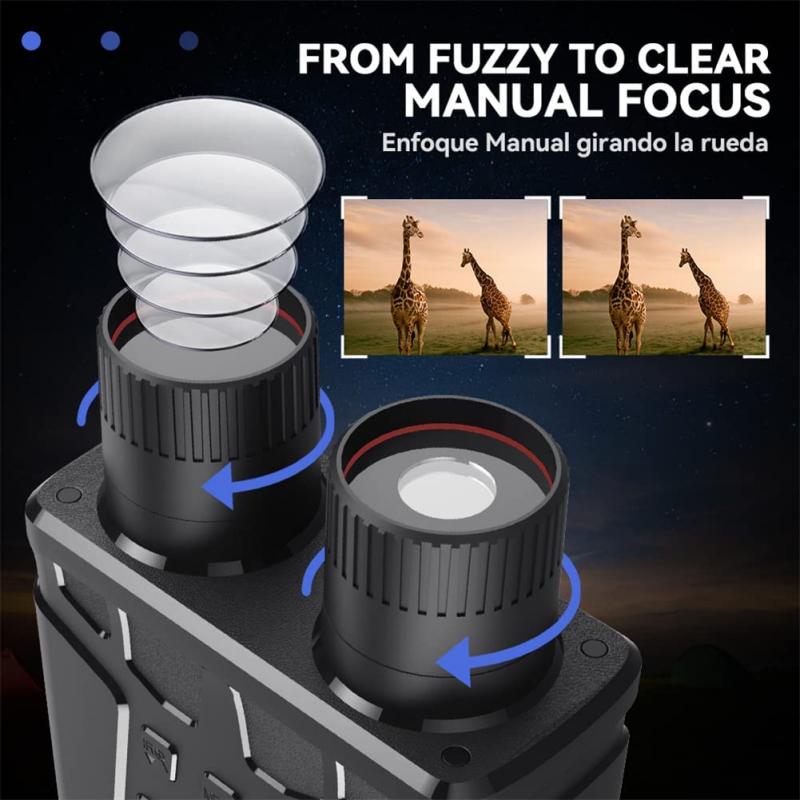
2、 Types and Features of Night Vision Binoculars
Night vision binoculars are optical devices that allow users to see in low-light or dark conditions. They are specifically designed to enhance visibility during nighttime activities such as hunting, surveillance, wildlife observation, and even military operations. These binoculars utilize advanced technology to amplify the available light, making objects appear brighter and clearer in the dark.
There are several types of night vision binoculars available in the market, each with its own unique features and capabilities. The most common types include image intensifier binoculars, thermal imaging binoculars, and digital night vision binoculars.
Image intensifier binoculars work by collecting the available light through the objective lens and then passing it through an image intensifier tube. This tube amplifies the light and converts it into an electronic signal, which is then displayed on a phosphor screen, creating a visible image.
Thermal imaging binoculars, on the other hand, detect the heat emitted by objects and convert it into a visible image. These binoculars are particularly useful for detecting living beings or objects that emit heat, even in complete darkness.
Digital night vision binoculars use a combination of image sensors and digital processing to capture and enhance the available light. They offer the advantage of being able to record images and videos, as well as providing a more versatile viewing experience.
In terms of features, night vision binoculars may include adjustable magnification, built-in infrared illuminators for enhanced visibility in complete darkness, weather resistance, and ergonomic designs for comfortable use over extended periods.
The latest advancements in night vision binocular technology have seen improvements in image quality, range, and battery life. Some models now offer higher resolution displays, longer detection ranges, and longer-lasting rechargeable batteries. Additionally, there has been a trend towards more compact and lightweight designs, making them easier to carry and use in the field.
Overall, night vision binoculars are essential tools for anyone who needs to see clearly in low-light or dark conditions. With the latest advancements in technology, these devices continue to evolve, providing users with improved visibility and performance.

3、 Factors to Consider When Choosing Night Vision Binoculars
Night vision binoculars are optical devices that allow users to see clearly in low-light or dark conditions. They are equipped with special technology that amplifies the available light, including infrared light, to provide a clear and detailed image. Night vision binoculars are commonly used by hunters, wildlife enthusiasts, law enforcement agencies, and military personnel.
When choosing night vision binoculars, there are several factors to consider. Firstly, it is important to determine the intended use of the binoculars. Different models are designed for specific purposes, such as hunting, surveillance, or navigation. Understanding the specific requirements will help in selecting the most suitable binoculars.
Another important factor is the generation of the night vision technology. Currently, there are four generations of night vision devices available, with each generation offering improved performance and image quality. The latest generation, known as Generation 4, provides the highest level of performance and clarity, but it is also the most expensive.
Additionally, the magnification power and field of view should be considered. Higher magnification allows for a closer view of the target, but it may result in a narrower field of view. The objective lens diameter is also important as it determines the amount of light that can enter the binoculars, affecting the image brightness.
Durability and weather resistance are crucial factors, especially for outdoor activities. Look for binoculars that are waterproof, fog-proof, and shock-resistant to ensure they can withstand harsh conditions.
Lastly, consider the overall size, weight, and comfort of the binoculars. If they are too heavy or uncomfortable to use for extended periods, it may affect the overall experience.
In recent years, there have been advancements in night vision technology, such as the integration of digital imaging and thermal imaging capabilities. These advancements have improved image quality, range, and versatility of night vision binoculars. Additionally, some models now offer built-in recording capabilities, allowing users to capture images and videos directly from the binoculars.
In conclusion, when choosing night vision binoculars, it is important to consider factors such as the intended use, generation of night vision technology, magnification power, field of view, durability, and comfort. With the latest advancements in technology, night vision binoculars have become more versatile and capable, providing users with enhanced visibility in low-light conditions.
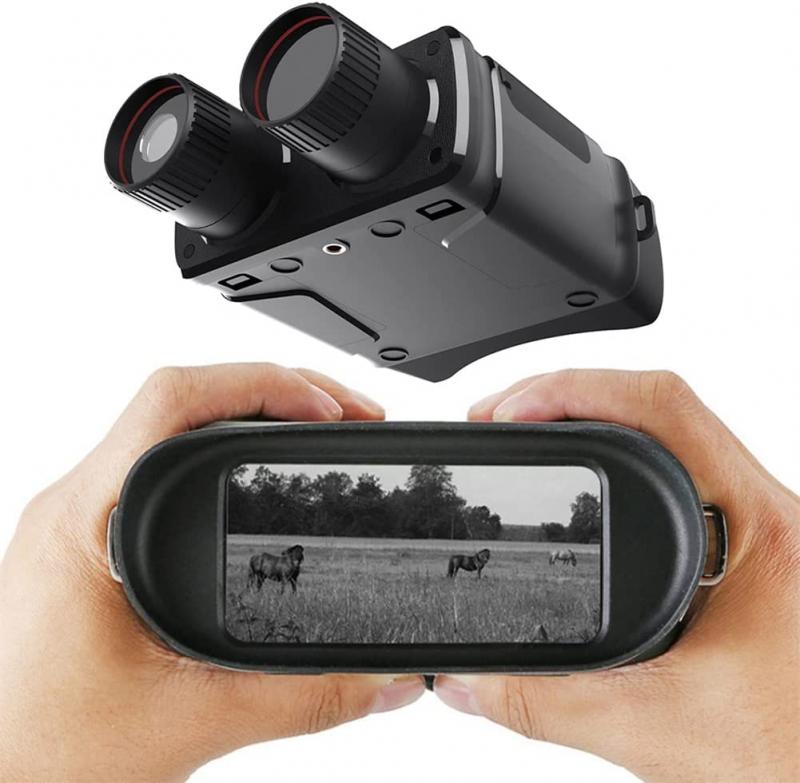
4、 Applications and Uses of Night Vision Binoculars
Night vision binoculars are optical devices that allow users to see in low-light or dark conditions. They are equipped with special technology that amplifies the available light, making it possible to see clearly even in complete darkness. These binoculars are commonly used by military personnel, law enforcement agencies, hunters, and outdoor enthusiasts.
The primary purpose of night vision binoculars is to enhance visibility and provide a clear view of the surroundings during nighttime operations. They are particularly useful in situations where traditional binoculars or the naked eye would be ineffective due to limited light availability. Night vision binoculars can detect and amplify even the faintest sources of light, such as moonlight or starlight, allowing users to navigate and observe their surroundings with ease.
Night vision binoculars have a wide range of applications. In military and law enforcement operations, they are used for surveillance, reconnaissance, and target acquisition. These binoculars enable personnel to gather critical information and maintain situational awareness in low-light environments, enhancing their effectiveness and safety.
Hunters also benefit from night vision binoculars as they allow for better visibility during nighttime hunting expeditions. They can help hunters track game, identify potential threats, and navigate through challenging terrain.
Moreover, night vision binoculars are popular among outdoor enthusiasts who enjoy activities such as camping, wildlife observation, and stargazing. They provide a unique and immersive experience, allowing users to explore the nocturnal world and observe wildlife behavior that is not easily visible during the day.
In recent years, there have been advancements in night vision technology, leading to the development of more compact and lightweight binoculars with improved image quality. These advancements have made night vision binoculars more accessible to a wider range of users, including hobbyists and nature enthusiasts.
Overall, night vision binoculars are essential tools for individuals and professionals who require enhanced visibility in low-light conditions. They offer a unique perspective and enable users to see and experience the world after dark.





